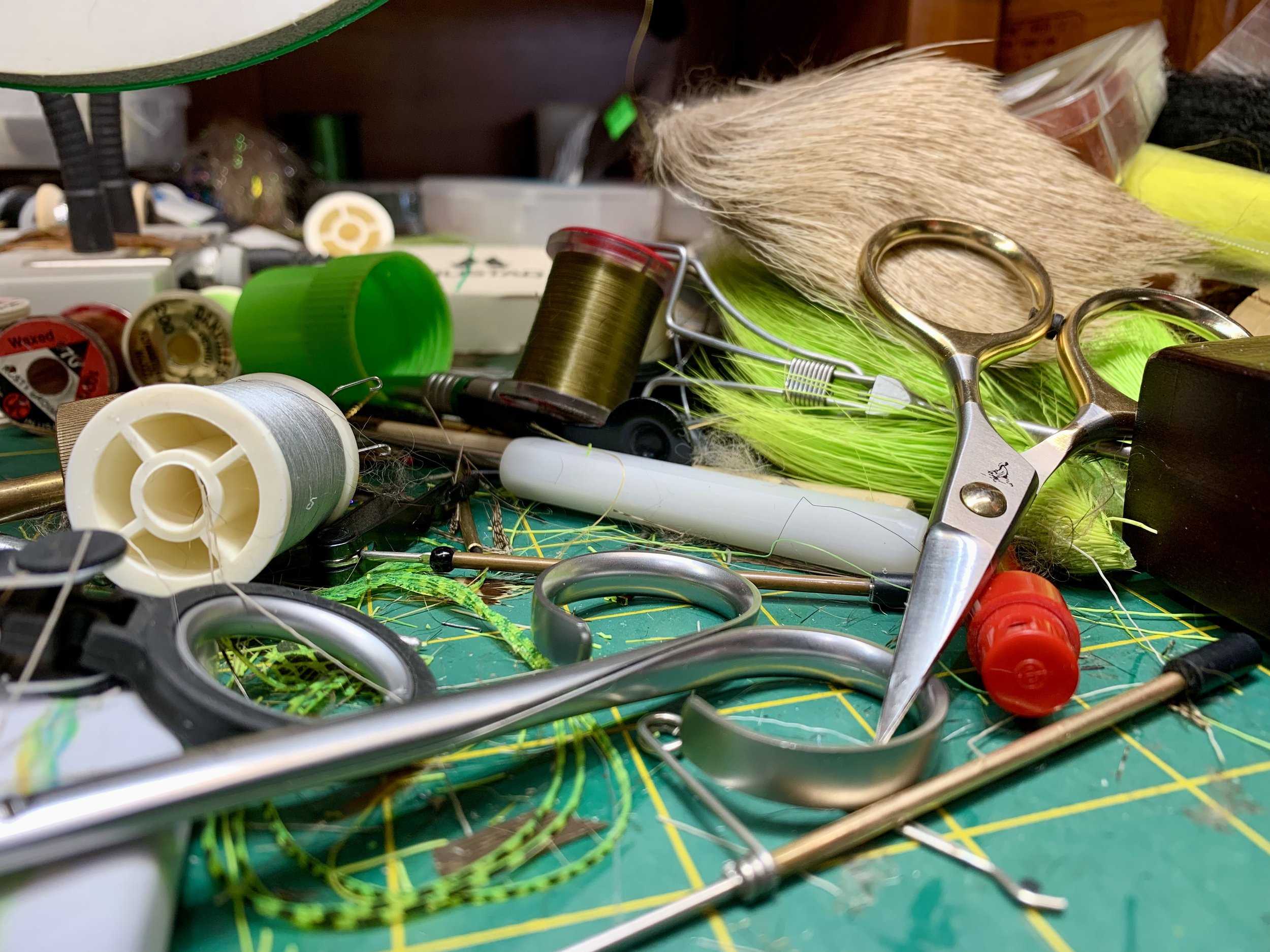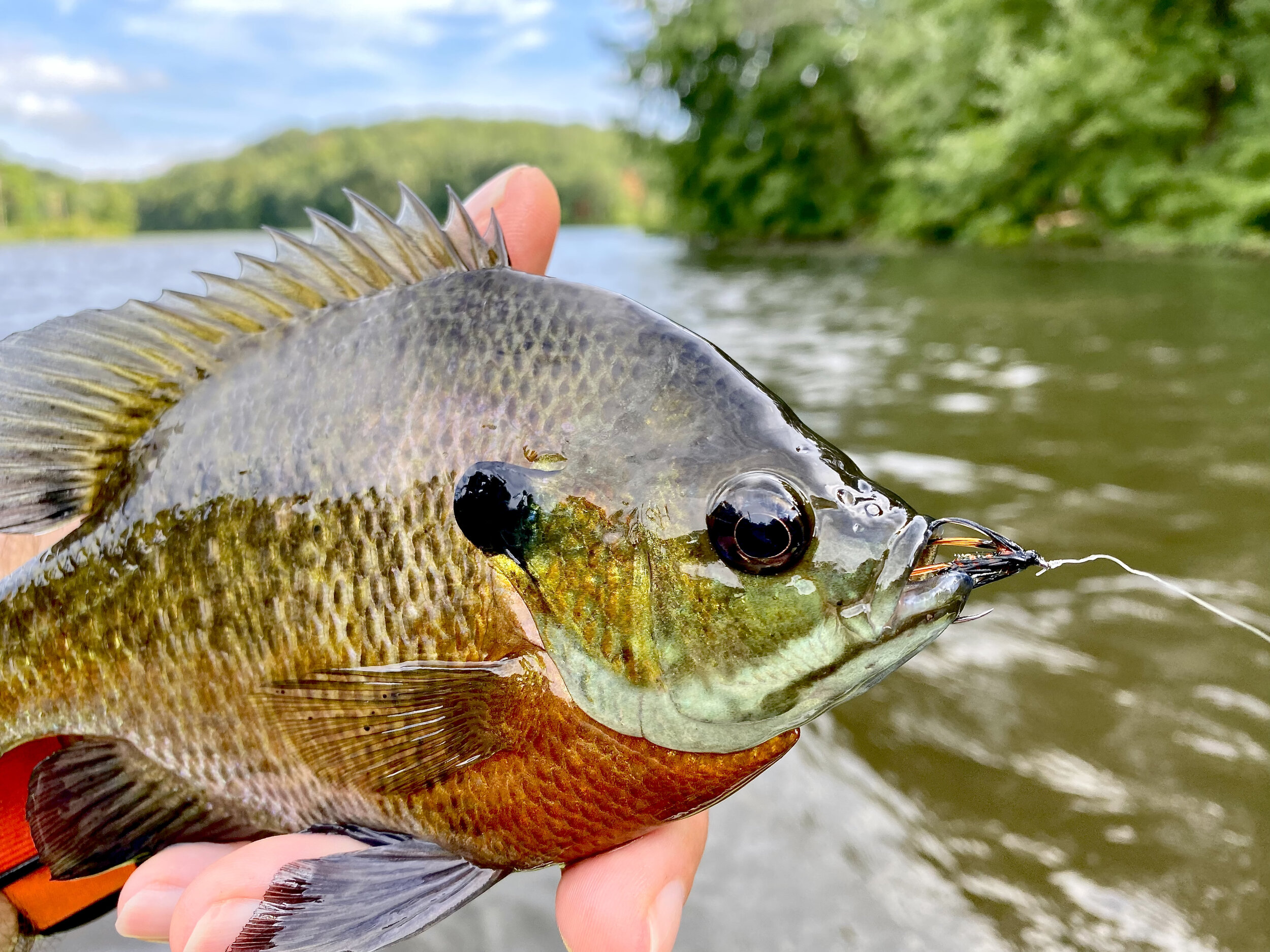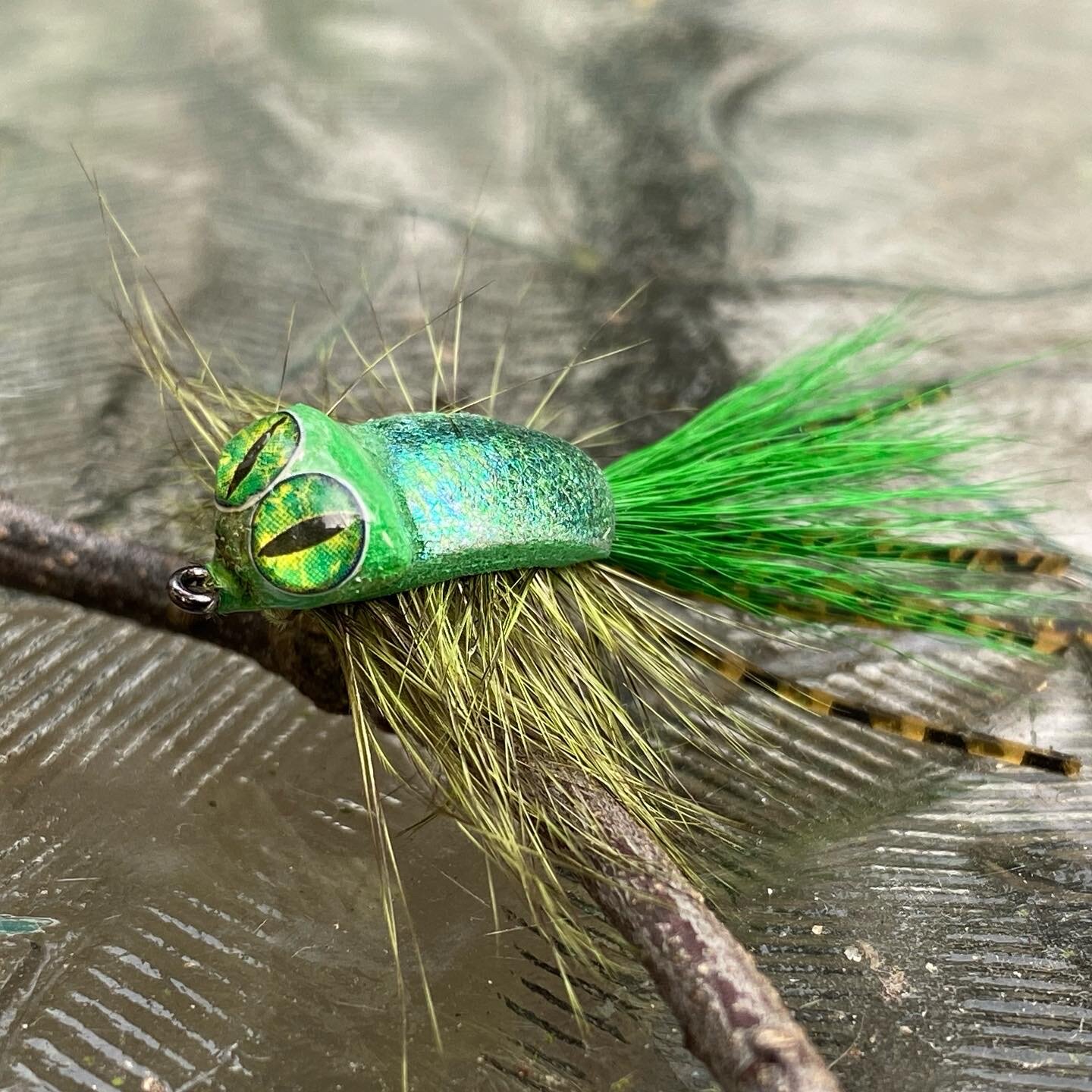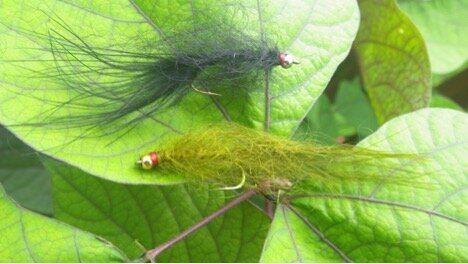While I tie flies year-round, my fly tying kicks up a notch during winter. As the days get shorter and the nights grow longer, I will spend fewer hours fishing, which leaves more time for fly tying. Nothing beats settling in at the tying desk for an evening of fly tying with your back warmed by a crackling fire. I often tie in the evenings after the family settles down for the night, my only company being a snoring labrador retriever curled up at my feet under the desk.
Fly tying is also a great way to pass the time on those winter days when cold, stormy weather keeps you housebound. Cabin fever can be a real problem for someone accustomed to spending most of their time outdoors. However, fly tying keeps me engaged with my favorite hobby when I can’t actually get outdoors to do it.
The official kickoff of my fly tying season usually occurs in November, generally coinciding with the annual International Fly Tying Symposium that takes place every year in New Jersey. This show is a fantastic event for the fly tier. The symposium features fly tiers from around the world, sharing the secrets of their craft.
When I first started tying flies at this event, I was tying trout flies like everyone else. Then, a few years back, I decided to share my love of warm water fly fishing, particularly fly fishing for panfish, by tying up some of my favorite panfish patterns. I did not know what to expect that first year. Would I be ridiculed for tying panfish flies among the fly tying legends that attend this event? Instead, I was pleasantly surprised that quite the opposite occurred. Every time I looked up from the vise, I saw nothing but smiling faces giving approving nods and enjoyed hours of conversation with folks that shared my love of fly fishing for panfish and bass. As it turns out, many folks enjoy (some secretly) the pleasures of fly fishing for panfish.
That time of year is rolling around again, and I look forward to the start of the show season. The International Fly Tying Symposium is the first of many fly fishing shows for me. In addition to the Fly Tying Symposium, I will be tying flies at three of the Fly Fishing Shows (Marlborough, MA - Edison, NJ - Lancaster, PA), the Maryland Fly Fishing Show, and other local events.
This year, the International Fly Tying Symposium has returned to the Double Tree Hotel in Somerset, NJ. Although the show has taken place at several locations over the 31 years it has existed, the Double Tree Hotel ranks as the favorite location with tiers and attendees alike. The show will take place Saturday and Sunday, November 12 & 13, 2022.
If you are a regular attendee of this event, stop by my table and say hello. I’ll have a little something special to give out to folks who mention this post and are fans of the website and our Facebook Group. If you have never attended this event and live in the tri-state area, I encourage you to check it out. If you are not a fly tier but enjoy fly fishing, the show still has a lot to offer, but you will not want to miss The Fly Fishing Show when it comes to town in January!
For more information on both shows, click the buttons below.
I will be redesigning the flies for sale section of the website over the next few weeks. I will be opening up fly orders again shortly and will be offering several new patterns in addition to the old favorites. Stay tuned!




